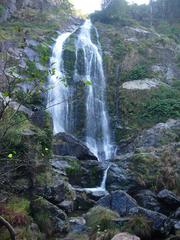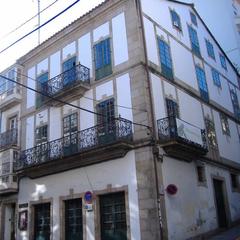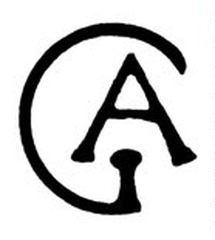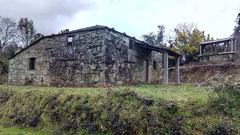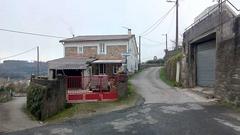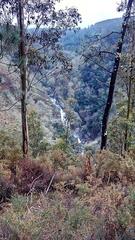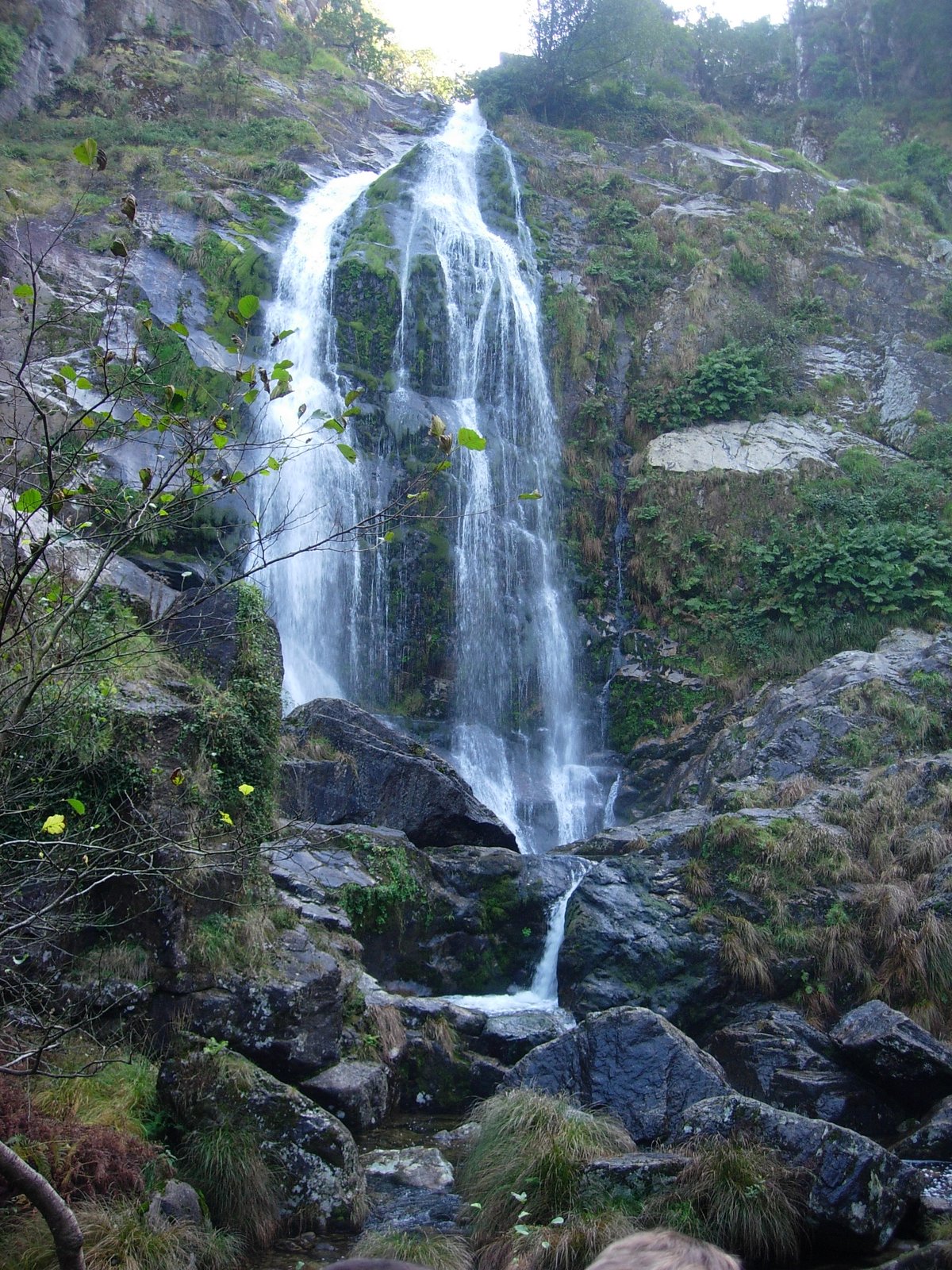
Comprehensive Guide to Visiting Anca, Neda, and Ferrol, Spain
Date: 17/08/2024
Introduction
Spain’s Galicia region is a treasure trove of historical, cultural, and natural wonders, with Ferrol, Neda, and Anca standing out as must-visit destinations. These locales offer a unique blend of historical significance, architectural marvels, and vibrant cultural experiences. Ferrol, known for its naval heritage, boasts landmarks like the Castle of San Felipe and the Arsenal of Ferrol, reflecting its maritime dominance (Turismo de Galicia). Neda, a key stop on the English Way of the Camino de Santiago, charms visitors with its scenic landscapes and historical sites like the San Martiño de Xubia Monastery (Wikipedia). Anca, with its medieval roots and traditional Galician architecture, provides an authentic cultural immersion through its festivals and local cuisine. This comprehensive guide offers insights into the visiting hours, tickets, historical sites, and travel tips for these captivating destinations.
Table of Contents
- Ferrol: Visiting Hours, Tickets, and Historical Sites in A Coruña
- Visiting Neda: Discover Historical Sites, Accommodation, and Travel Tips
- Introduction
- Neda Historical Significance and Sites
- Neda Geography and Layout
- Key Attractions in Neda
- Neda Accommodation Options
- Culinary Delights in Neda
- Neda Travel Tips for Pilgrims
- Practical Information for Visiting Neda
- Cultural Insights into Neda
- Challenges and Recommendations for Neda Visitors
- Frequently Asked Questions (FAQ) About Neda
- Anca Village Guide: Visiting Hours, Tickets, and Historical Sites
Ferrol: Visiting Hours, Tickets, and Historical Sites in A Coruña
Historical Significance
Ferrol, located in the province of A Coruña in Galicia, Spain, is a city steeped in history and cultural heritage. Its origins date back to the 1st century BC, but it gained prominence in the 18th century as a major naval shipbuilding center. The city’s strategic location on the Atlantic coast made it an ideal site for naval operations, and it became one of Spain’s most important naval bases. The construction of the Arsenal of Ferrol in 1750 marked a significant turning point in the city’s history. Designed by the engineer Julián Sánchez Bort, the Arsenal is an impressive military complex that showcases the engineering prowess of the Enlightenment period. The Arsenal includes the Dockyards, a set of hydraulic works and buildings that are unique in Europe. These facilities played a crucial role in the construction and repair of naval vessels, contributing to Spain’s maritime dominance (Turismo de Galicia).
Cultural Heritage
Ferrol’s cultural heritage is a blend of military history, urban elegance, and modernist architecture. The Magdalena quarter, laid out in the 18th century, is a prime example of Enlightenment urban planning. The quarter is designed in a grid pattern, resembling a bar of chocolate, and features stunning modernist buildings such as the Jofre Theatre. This area is a testament to the city’s architectural evolution and its embrace of modernist design principles (Visit Ferrol).
One of the most iconic landmarks in Ferrol is the Castle of San Felipe. Built in 1589 and expanded in the 18th century, the castle offers breathtaking views of the city and the estuary. It serves as a reminder of the city’s military past and its strategic importance in defending the coastline. Visitors can explore the castle’s fortifications and learn about its role in various historical conflicts. The Castle of San Felipe is open daily from 10:00 AM to 6:00 PM, and tickets can be purchased at the entrance or online (Turismo de Galicia).
Modern Attractions
Ferrol offers a range of modern attractions that cater to diverse interests. The city boasts some of the best virgin beaches in Galicia, making it a paradise for surfers and beachgoers. The Costa Ártabra, a Site of Community Importance (SCI), is known for its pristine beaches and dramatic cliffs. Visitors can enjoy activities such as surfing, bodyboarding, and scuba diving in the estuary (Visit Ferrol).
For those interested in art and culture, the street-art route of Las Meninas de Canido is a must-see. This vibrant neighborhood features murals inspired by Diego Velázquez’s famous painting “Las Meninas.” The project began in 2008 as a way to revitalize the area and has since grown into a popular cultural attraction. The colorful murals add a modern twist to the city’s artistic landscape (Visit Ferrol).
Festivals and Events
Ferrol is renowned for its festivals and events, which reflect the city’s rich cultural traditions. One of the most significant events is Holy Week, which has been celebrated for nearly 500 years. Declared of International Tourist Interest, Holy Week in Ferrol features elaborate processions, religious ceremonies, and traditional music. The event attracts thousands of visitors each year and offers a unique insight into the city’s religious heritage (Turismo de Galicia).
Another notable event is the Pull&Bear Patín Classic Galicia Pro, a surfing competition held on the city’s beaches. This event draws surfers from around the world and showcases Ferrol’s status as a premier surfing destination. The competition is part of the city’s broader efforts to promote active tourism and outdoor activities. Tickets for the event can be purchased online or at the venue (Visit Ferrol).
Gastronomy
Ferrol’s culinary scene is a reflection of its maritime heritage and Galician traditions. The city’s markets, bakeries, and cafés offer a taste of local flavors, with an emphasis on fresh seafood and traditional dishes. Visitors can sample delicacies such as pulpo a la gallega (Galician-style octopus), empanadas (savory pies), and pimientos de Padrón (Padrón peppers). The city’s gastronomic offerings are a testament to its rich culinary heritage and its commitment to preserving traditional recipes (Turismo de Galicia).
Visitor Tips
For a memorable visit to Ferrol, here are some practical tips:
Transportation
Ferrol is well-connected by road and rail. The city is accessible from major cities such as A Coruña and Santiago de Compostela. The nearest airport is A Coruña Airport, located about 50 kilometers away.
Accommodation
Ferrol offers a range of accommodation options, from budget-friendly hostels to luxury hotels. The Magdalena quarter is a popular area to stay, with its proximity to major attractions and vibrant atmosphere.
Weather
The best time to visit Ferrol is during the spring and summer months (April to September), when the weather is mild and ideal for outdoor activities. However, the city can be visited year-round, with each season offering its own unique charm.
Local Etiquette
Galicians are known for their hospitality and friendliness. When visiting Ferrol, it’s important to respect local customs and traditions. Learning a few basic phrases in Spanish or Galician can go a long way in enhancing your experience.
Opening Hours and Tickets
- Castle of San Felipe: Open daily from 10:00 AM to 6:00 PM. Tickets can be purchased at the entrance or online.
- Arsenal of Ferrol: Check online for specific visiting hours and ticket information.
Accessibility
Many attractions in Ferrol are accessible for people with disabilities. Be sure to check specific sites for detailed accessibility information.
FAQ
- What are the visiting hours for the Castle of San Felipe? The Castle of San Felipe is open daily from 10:00 AM to 6:00 PM.
- Where can I buy tickets for the Pull&Bear Patín Classic Galicia Pro? Tickets can be purchased online or at the venue.
Call to Action
Don’t forget to download our mobile app Audiala for more travel tips and updates on Ferrol. Follow us on social media and check out our other articles on historical sites in A Coruña.
Conclusion
Ferrol is a city that seamlessly blends its historical significance with modern attractions, making it a compelling destination for travelers. From its naval heritage and architectural marvels to its vibrant cultural scene and outdoor activities, Ferrol offers something for everyone. Whether you’re a history buff, an art enthusiast, or an adventure seeker, Ferrol promises a memorable and enriching experience.
Visiting Neda: Discover Historical Sites, Accommodation, and Travel Tips
Introduction
Neda, a charming riverside town in northwestern Spain, is a treasure trove of history, culture, and natural beauty. From its significant historical sites to its picturesque landscapes and welcoming community, this guide provides everything you need to know about visiting Neda, including travel tips, accommodation options, and must-see attractions.
Neda Historical Significance and Sites
Neda, located in the province of A Coruña, is steeped in history and tradition. It is an important stop along the English Way (Camino Inglés) of the Camino de Santiago, a pilgrimage route traversed by pilgrims for centuries. Notably, the town is also connected to George A. Romero, the famed filmmaker, whose father was born here (Wikipedia).
Neda Geography and Layout
Nestled on the banks of the Ria de Ferrol, Neda offers picturesque views and a serene environment. The town features a rural landscape interspersed with industrial influences from nearby Ferrol, known for its shipyards and foundries (Stingy Nomads). The route from Ferrol to Neda is approximately 14 kilometers and runs parallel to the ria, offering scenic vistas along the way (Camino de Santiago).
Key Attractions in Neda
San Martiño de Xubia Monastery
One of the notable landmarks near Neda is the San Martiño de Xubia Monastery. Located in the neighboring municipality of Narón, it is accessible via the O Salto Path, which crosses the Xubia River into Neda (Camino de Santiago).
Neda Municipal Albergue
The municipal albergue in Neda is a popular stop for pilgrims. Despite its basic amenities, it offers a comfortable resting place for weary travelers. Situated near the river, it provides a tranquil setting (The Camino Provides).
Neda Accommodation Options
Neda caters to different preferences and budgets with a variety of accommodation options. For a more private stay, consider local hotels such as Hotel Almendra, Hotel Alda El Suizo, and Gran Hotel de Ferrol (Stingy Nomads). The Pensión Residencia Maragoto offers an economical alternative for budget-conscious travelers (Pilgrimage Traveler).
Culinary Delights in Neda
Neda is renowned for its bread, a local specialty celebrated with its own monument. Visitors can enjoy a variety of local dishes at the town’s cafes and restaurants, including calamares a la romana and traditional Spanish fare (Spanish for Camino).
Neda Travel Tips for Pilgrims
Route Markings
Pilgrims should pay attention to route markings in Neda and surrounding areas. For example, in Pontedeume, the route is marked with metal shells on the ground, which can be easily missed if not vigilant (Stingy Nomads).
Stamps and Credentials
Collecting stamps (sellos) is a crucial part of the Camino experience. Pilgrims can easily obtain two stamps per day from various bars, cafes, and accommodation places along the route. This practice is essential for validating the pilgrimage (Stingy Nomads).
Practical Information for Visiting Neda
Weather and Best Time to Visit
The best time to visit Neda is during the spring and autumn months when the weather is mild and conducive to walking. Summers can be hot, making the journey more challenging, while winters are often wet and cold.
Local Services
Neda and the adjoining town of Narón offer a range of services, including grocery stores, cafes, and family-run accommodations. Visitors can also find pharmacies and tourist offices for any last-minute needs (Pilgrimage Traveler).
Cultural Insights into Neda
Neda’s culture is deeply rooted in its history and traditions. The town’s rural charm is complemented by its industrial heritage, creating a unique blend of old and new. The local community is known for its hospitality, often going out of their way to assist pilgrims and visitors.
Challenges and Recommendations for Neda Visitors
While Neda is a charming destination, visitors should be prepared for some challenges. The walk from Ferrol to Neda, though scenic, can be strenuous with periodic hill climbs. It is advisable to start early in the day to avoid the midday heat and to ensure ample time for rest and exploration (Pilgrimage Traveler).
Frequently Asked Questions (FAQ) About Neda
Q: What are the visiting hours for Neda’s historical sites? A: Visiting hours vary by site, so it’s best to check with local tourist offices or specific landmarks for accurate information.
Q: Are there guided tours available in Neda? A: Yes, guided tours are available and can be arranged through local tour operators or the tourist office.
Q: What is the best way to get to Neda? A: Neda is accessible by car, bus, or train from major cities like A Coruña and Ferrol. The Camino de Santiago route also passes through the town.
Q: Is Neda suitable for family visits? A: Yes, Neda offers a range of activities and attractions suitable for visitors of all ages.
Conclusion and Call to Action
Neda, with its rich history, scenic beauty, and welcoming community, offers a memorable experience for pilgrims and tourists alike. Whether you are walking the Camino de Santiago or simply exploring the region, Neda provides a perfect blend of cultural heritage and natural splendor. For more travel tips and updates, download the Audiala mobile app and follow us on social media.
Anca Village Guide: Visiting Hours, Tickets, and Historical Sites
Historical Significance
Anca, a quaint village in the region of Galicia, Spain, is a hidden gem that offers a unique blend of history and culture. The village’s origins date back to the medieval period, and it has retained much of its historical charm. The architecture in Anca reflects its rich past, with many buildings showcasing traditional Galician styles. The village is also known for its ancient churches, some of which date back to the 12th century and are significant historical landmarks. These churches provide insight into the region’s religious and architectural history and are must-visits.
Cultural Insights
Anca is a place where traditional Galician culture thrives. The village is known for its vibrant festivals, deeply rooted in local customs and traditions. One of the most notable festivals is the Festa de San Xoán, celebrated in June. This festival features traditional music, dance, and food, providing visitors with an authentic Galician experience. The local cuisine is another highlight, with dishes such as pulpo a la gallega (Galician-style octopus) and empanada (savory pie) being must-tries. The village’s markets and restaurants offer a variety of local delicacies that reflect the region’s culinary heritage.
Attractions and Activities
Historical Landmarks
-
Church of San Xoán: This 12th-century church is one of the oldest buildings in Anca. It features Romanesque architecture and houses several ancient artifacts. The church is a significant religious site and a must-visit for history enthusiasts. Visiting hours and ticket information can be found at the local tourism office.
-
Medieval Bridge: The medieval bridge in Anca is another historical landmark that attracts visitors. The bridge, which spans a small river, offers picturesque views of the surrounding countryside and is a popular spot for photography.
Natural Beauty
-
Anca River: The Anca River runs through the village, providing a serene setting for various outdoor activities. Visitors can enjoy fishing, kayaking, and picnicking along the riverbanks. The river is also home to diverse flora and fauna, making it a great spot for nature lovers.
-
Hiking Trails: Anca is surrounded by lush forests and rolling hills, offering numerous hiking trails for outdoor enthusiasts. These trails vary in difficulty, catering to both casual walkers and experienced hikers. The trails provide stunning views of the Galician landscape and are a great way to explore the natural beauty of the region.
Visitor Tips
Best Time to Visit
The best time to visit Anca is during the spring and summer months, from April to September. During this period, the weather is mild and pleasant, making it ideal for outdoor activities and sightseeing. The village’s festivals also take place during these months, providing visitors with an opportunity to experience local culture and traditions.
Accommodation
Anca offers a range of accommodation options, from traditional guesthouses to modern hotels. Staying in a guesthouse provides a more authentic experience, allowing visitors to immerse themselves in the local culture. Many guesthouses are family-run and offer personalized service, making visitors feel at home.
Transportation
Anca is accessible by road, and the nearest major city is Santiago de Compostela, which is approximately 50 kilometers away. Visitors can rent a car or use public transportation to reach the village. The local bus service connects Anca with nearby towns and cities, making it easy to explore the region.
Local Cuisine
The local cuisine in Anca is a reflection of Galicia’srich culinary heritage. Seafood is a staple, with dishes such as pulpo a la gallega and caldeirada (Galician fish stew) being popular choices. The village’s markets offer fresh produce, including locally caught fish and shellfish. Visitors can also enjoy traditional Galician pastries, such as tarta de Santiago (almond cake) and filloas (Galician crepes).
Events and Festivals
-
Festa de San Xoán: Celebrated in June, this festival is one of the most important events in Anca. It features traditional music, dance, and food, and culminates in a bonfire, which is believed to ward off evil spirits. Tickets and schedules can be obtained from the festival’s official website.
-
Harvest Festival: Held in September, the Harvest Festival celebrates the end of the agricultural season. The festival includes a parade, traditional music and dance performances, and a feast featuring local produce.
Nearby Attractions
-
Santiago de Compostela: A UNESCO World Heritage Site, Santiago de Compostela is famous for its medieval old town and the Cathedral of Santiago de Compostela, the final destination of the Camino de Santiago pilgrimage. The city is approximately 50 kilometers from Anca and is a must-visit for history and culture enthusiasts (Spain.info).
-
Ferrol: Located about 60 kilometers from Anca, Ferrol is known for its rich maritime heritage and historical landmarks, such as the San Felipe Castle and the Church of San Francisco. The city also offers beautiful beaches and a vibrant cultural scene (Turismo de Galicia).
-
Neda: Just a short drive from Anca, Neda is a charming town known for its historical architecture and scenic landscapes. The town is a popular starting point for the English Way of the Camino de Santiago pilgrimage (Pilgrimage Traveler).
Practical Information
FAQ
- What are the visiting hours for the Church of San Xoán? Visiting hours vary by season. It is best to check with the local tourism office or the church’s official website for the most up-to-date information.
- How can I buy tickets for the Festa de San Xoán? Tickets for the Festa de San Xoán can be purchased online through the festival’s official website or at the event venue.
- Is there a guided tour available in Anca? Yes, guided tours are available. These can be booked through local tour operators or the tourism office.
Language
The primary language spoken in Anca is Galician, although Spanish is also widely understood. Learning a few basic phrases in Galician can enhance the travel experience and help visitors connect with the locals.
Currency
The currency used in Anca is the Euro (€). ATMs are available in the village, and most establishments accept credit and debit cards. It is advisable to carry some cash, especially when visiting smaller shops and markets.
Safety
Anca is a safe destination for tourists. However, it is always advisable to take standard precautions, such as keeping valuables secure and being aware of your surroundings. The village has a low crime rate, and the locals are known for their hospitality and friendliness.
Conclusion
Anca is a hidden gem in Galicia that offers a unique blend of history, culture, and natural beauty. From its ancient churches and medieval bridge to its vibrant festivals and delicious cuisine, the village has something for everyone. Whether you are a history enthusiast, a nature lover, or simply seeking a tranquil getaway, Anca promises a memorable experience. For more travel tips and updates, be sure to follow us on social media and check out our mobile app Audiala.
Conclusion
Ferrol, Neda, and Anca offer a rich tapestry of history, culture, and natural beauty, making them compelling destinations for any traveler. Ferrol’s blend of naval history and modern attractions, Neda’s serene landscapes and pilgrimage significance, and Anca’s medieval charm and vibrant festivals each provide unique experiences. Whether exploring historical landmarks like the Castle of San Felipe in Ferrol (Visit Ferrol), enjoying the local cuisine in Neda (Spanish for Camino), or participating in Anca’s traditional festivals, visitors are sure to create lasting memories. For more travel tips and updates, consider downloading the Audiala mobile app and following us on social media.
References
- Turismo de Galicia, n.d., Ferrol: Visiting Hours, Tickets, and Historical Sites in A Coruña source
- Visit Ferrol, n.d., Visit Ferrol source
- Wikipedia, n.d., Neda, Galicia source
- Stingy Nomads, n.d., English Way Camino de Santiago Stages source
- Camino de Santiago, n.d., Stage Ferrol-Neda source
- The Camino Provides, 2017, Camino Ingles Ferrol to Neda source
- Spanish for Camino, 2019, Camino Ingles de Ferrol a Neda source
- Pilgrimage Traveler, n.d., Day One Camino Ingles source
- Spain.info, n.d., Destination Santiago de Compostela source
